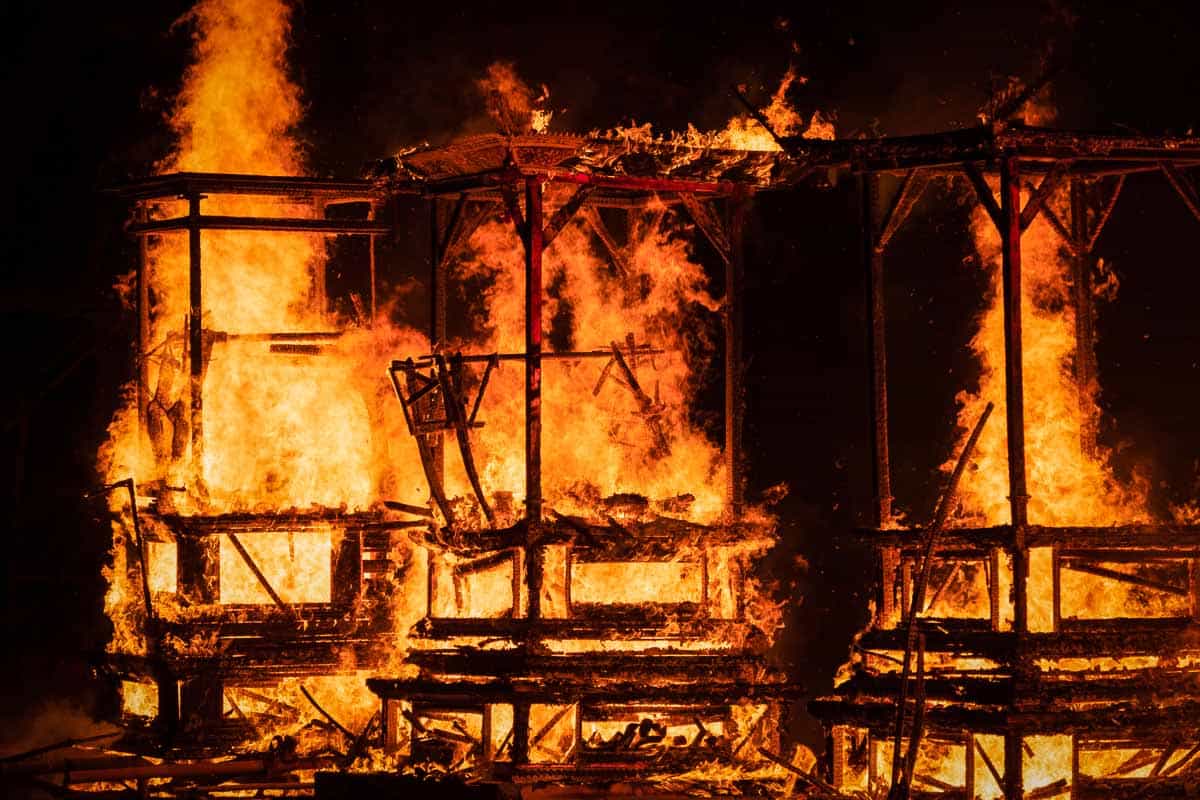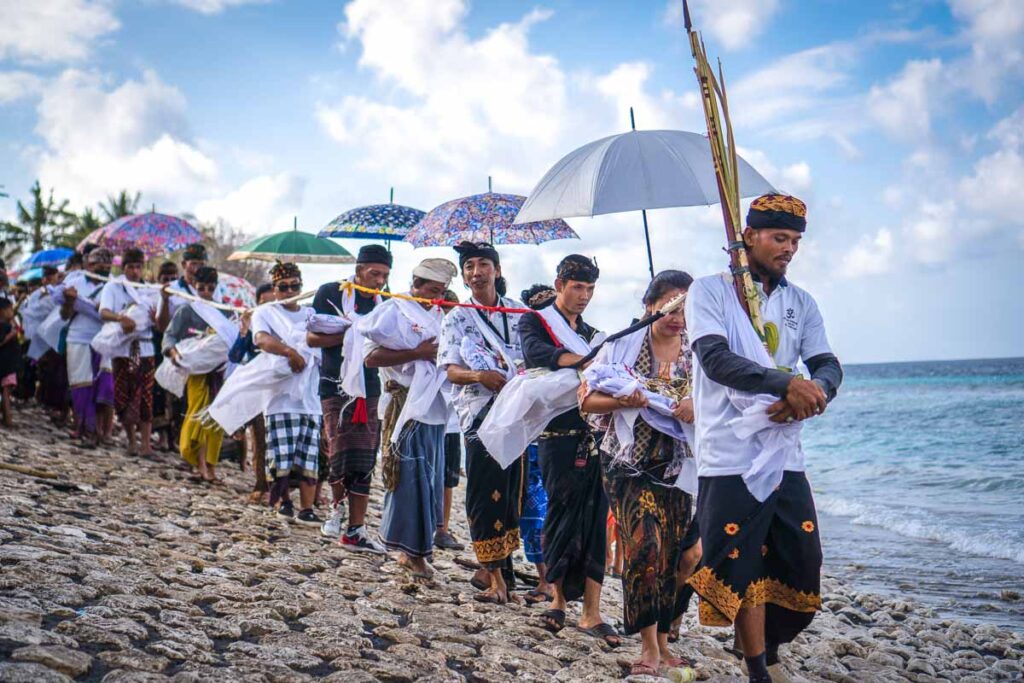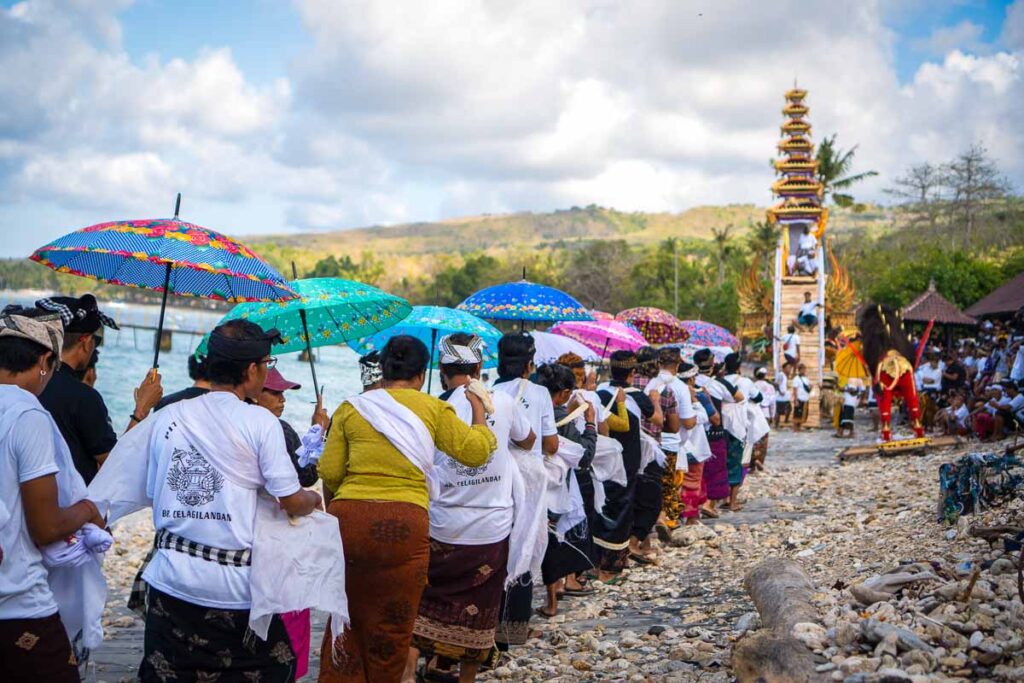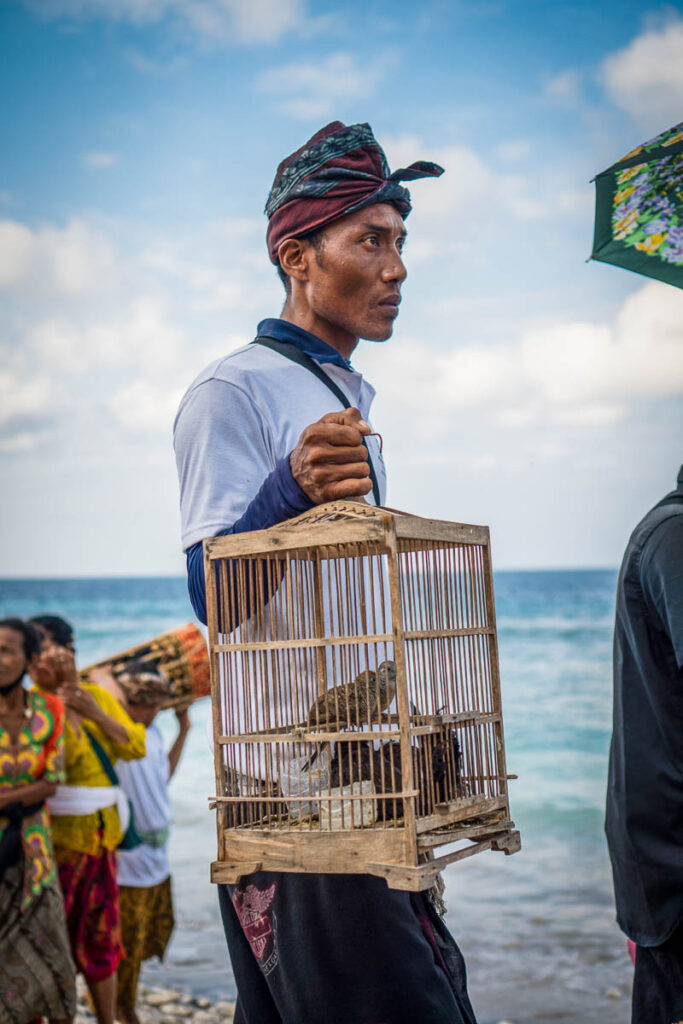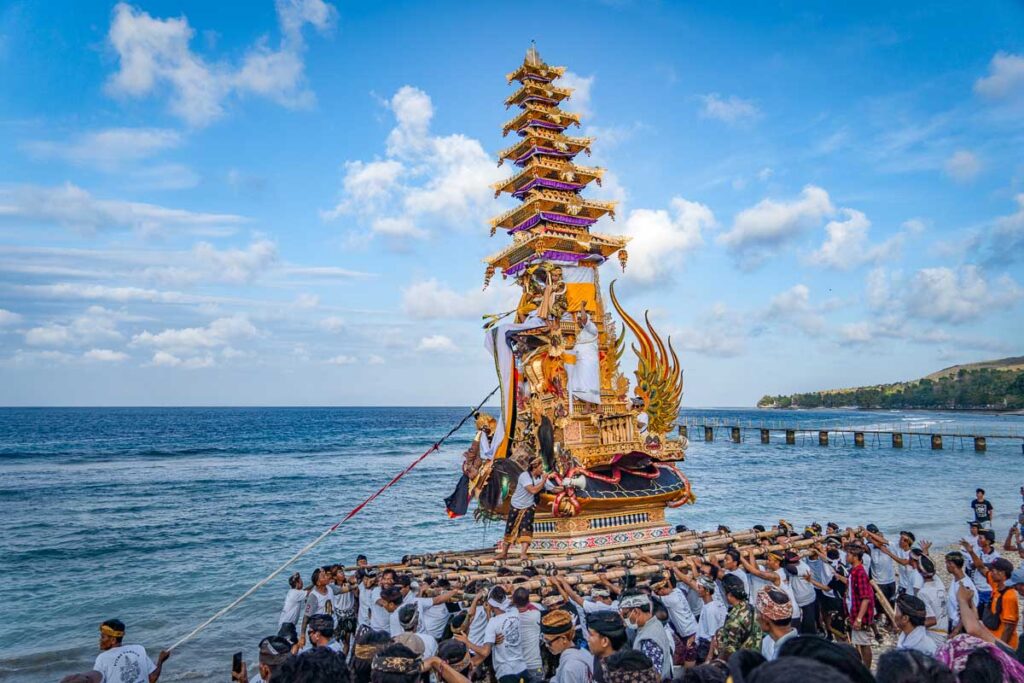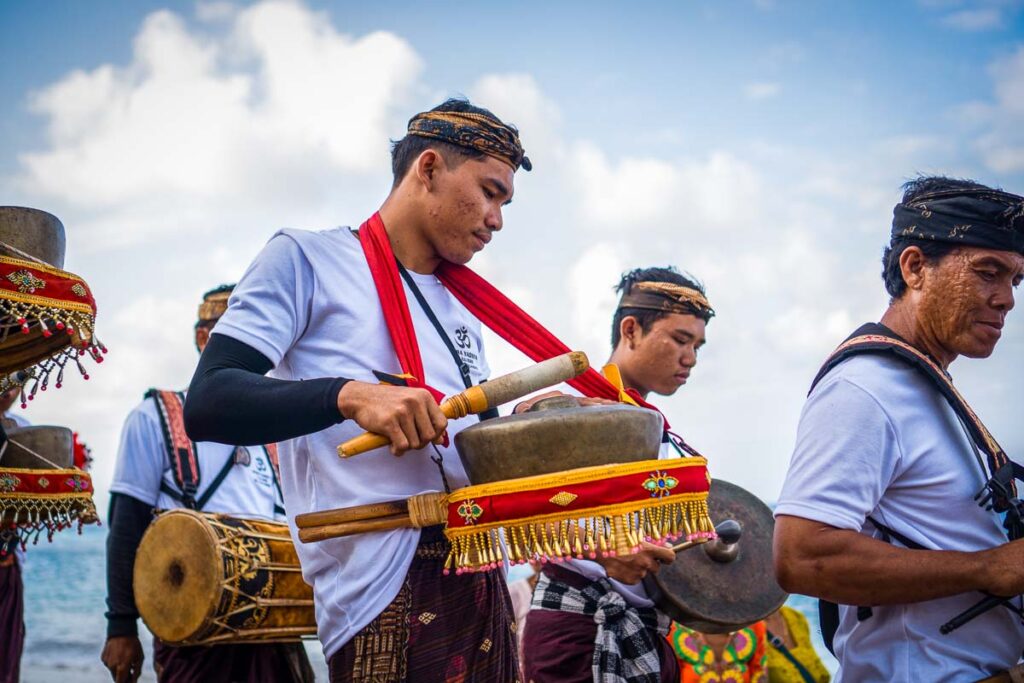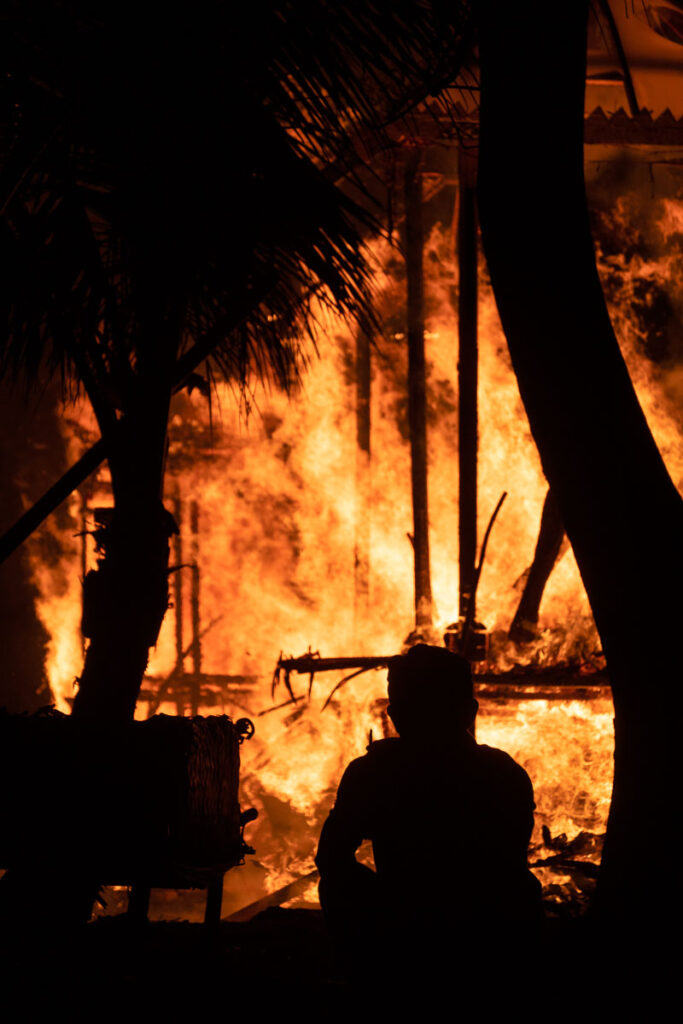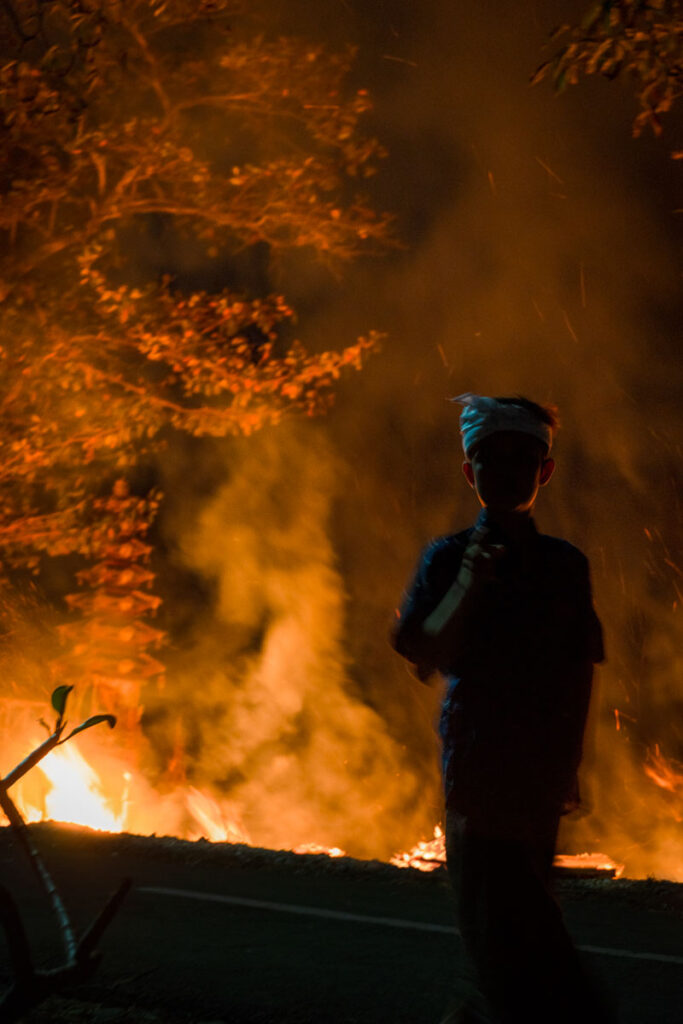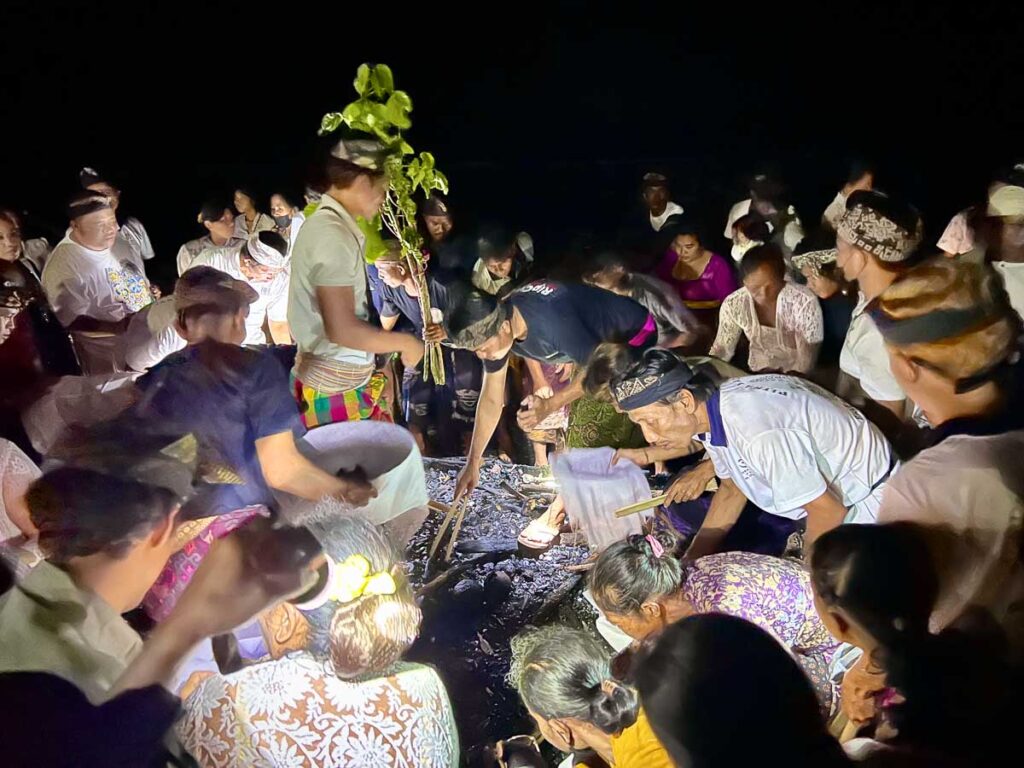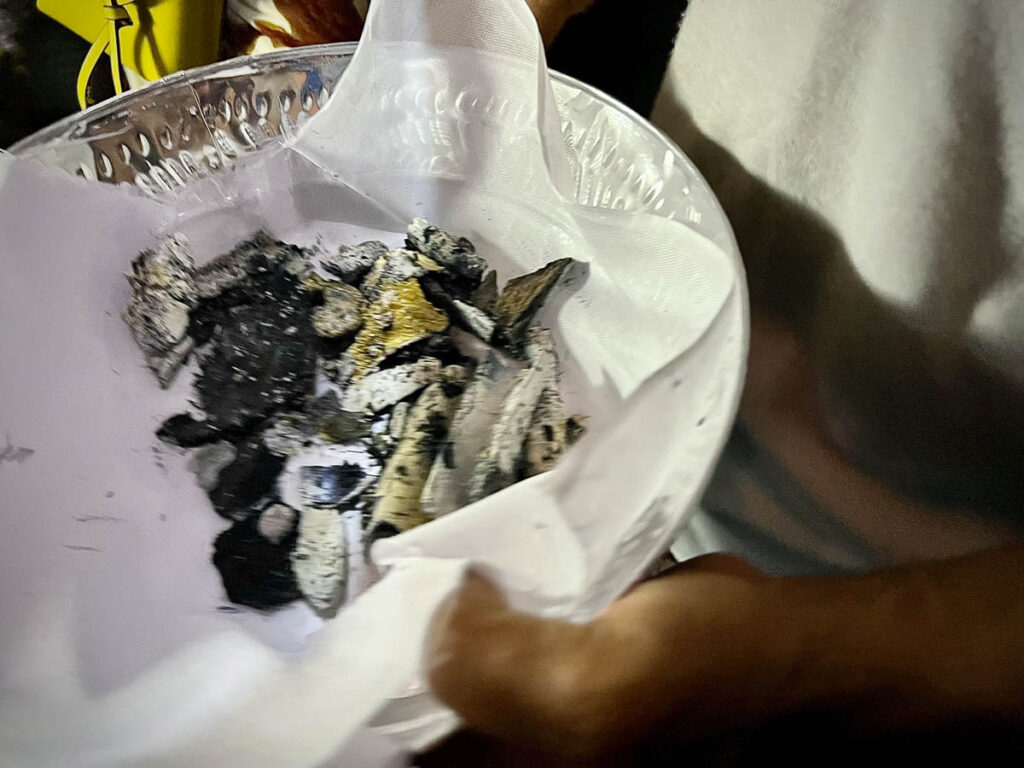Ngaben: Experiencing Pitra Yadnya, A Mass Cremation Funeral in Bali
Have you ever smelled the burning bones of recent ancestors? I have. As a fellow hostel-mate poignantly put it, this unrecognizable smell is just that, “particular”, with a distinctly sweet earthy smell, unknown if contributed by the type of wood or petrol used in the cremation pyre.
Unbeknownst to our group of foreigners, we had stumbled upon Ngaben, also known as Pitra Yadyna. This all-day Balinese mass cremation happens only once every five years in this small village off East Bali in Nusa Penida, Indonesia.
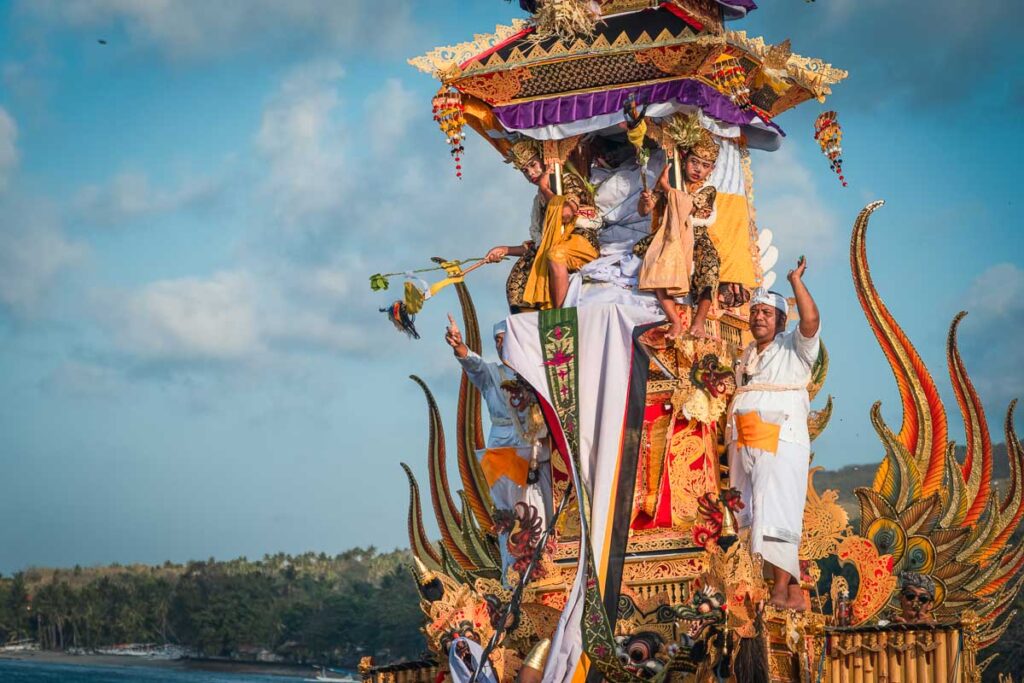
What is Ngaben (Pitra Yadyna)?
Balinese culture is different from any other island in Indonesia. Unlike the traditional indigenous villages of Flores and West Timur, Bali’s culture is a variation of Hinduism.
This Hindu funeral rite of Bali, Indonesia, is known by many names: Ngaben, Pitra Yadyna, Pelebon, and cremation ceremony. Ngaben cleanses the soul of a dead person to allow it to proceed to the heavenly realm, where it can wait for rebirth or be set free from life and death.
In Balinese Hindu theology, it is believed that when a person dies, their soul must fight against the lower realm evil to try and reach the upper realm. A proper cremation strengthens the chance that they will be successful.
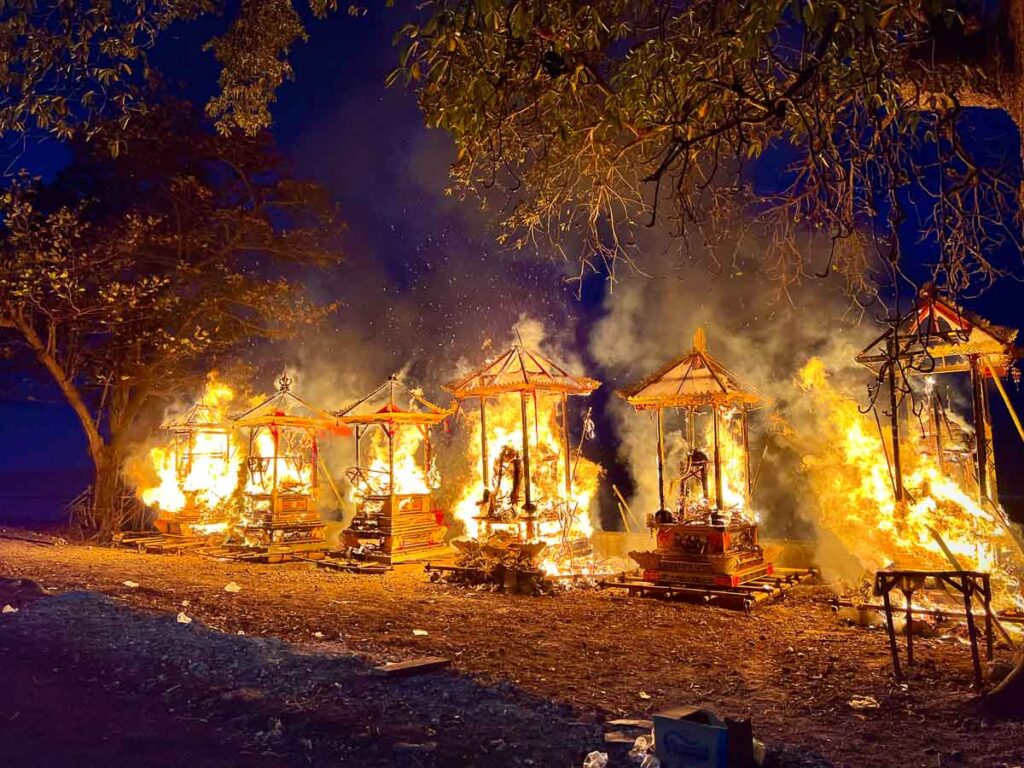
Celebrating Ngaben
Although death is never an easy thing, Ngaben is meant to be a celebration for their beloved’s soul moving on to life’s next cycle. No tears are shed as onlookers watch the procession and the ritualistic offerings.
Cost of a Ngaben
Although a quick Ngaben is the preferred method, it is usually too expensive. In the meantime, families temporarily bury their dead as they pool community funds to cremate many recently deceased in one elaborate Ngaben ceremony. Each village will typically host its own Ngaben ceremonies.
Everyone who has died within the last five years of this village may join, however, they must pay for the total cost of the ceremony. This year’s total cost: 200 million IDR or approximately ($13,500 USD). Those who do not have enough money may join in the next round, which will take place five years later. We’d seen t-shirts dating back to 2014.
What Happens to the Deceased’s Bodies in the Interim?
For the Ngaben funeral rites, the bodies of the deceased are exhumed, cleaned, and prepared for cremation. The bones are dressed in traditional clothing before they are burned.
What about the more recently deceased bodies? Although I can only speculate, the flesh may be burnt in a “pre-cremation” of sorts in order to clean the bones and eliminate the burning odor of flesh while also reducing the need for high temperatures.
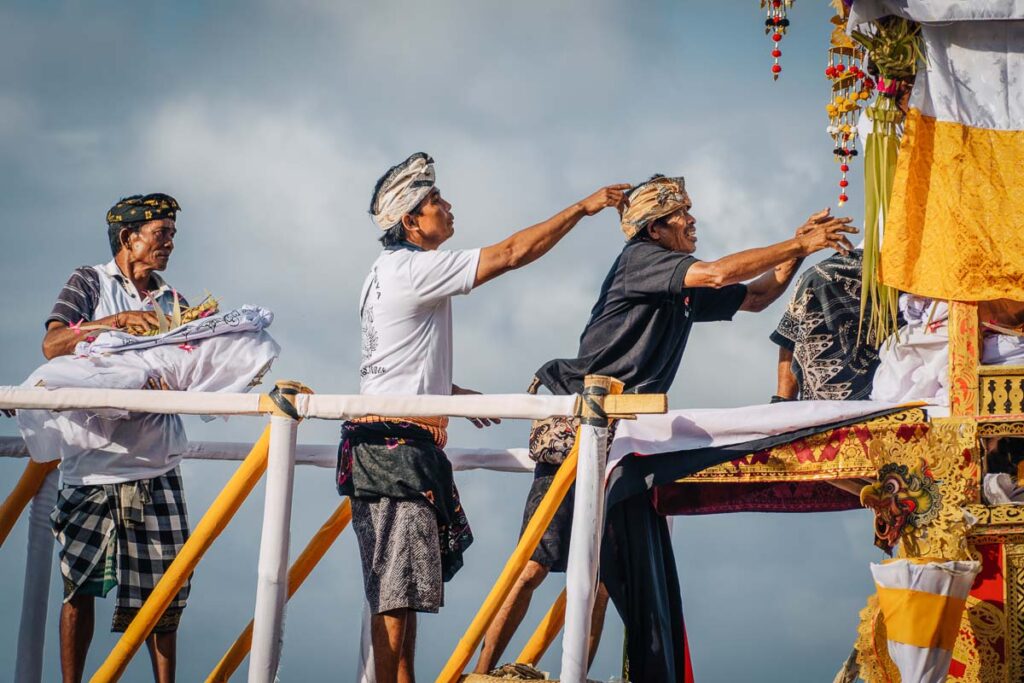
The Complex Play-by-Play of a Ngaben Ceremony
Pre-preparations
Preparations started weeks ago with the making of the Patulangan – a bamboo-paper “statue” and the Wadah – temple “statue” used as the coffin for the mass cremation.
Six animal Patulangans, each with their own distinct decoration, face one another in an open clearing. The seventh and largest Wadah towers at the head of the group, closest to the sea.
When we arrive at 2:30pm, the quiet chatter of the large crowd mumbles as they sit waiting while a few walk back and forth with purpose. At this point, our small group is the only obviously foreign onlookers, wondering what’s in store for us.


The Ngaben Ceremony Begins
At 3:30pm, the tide lowers enough to bring the structures closer to the water’s edge. More than 50 men haul the weight of the first animal Patulangan onto their shoulders with crouched knees and boost it up. Swiftly, the feet march in sync towards the sea and disappears in the distance. The same is done for four other animal Patulangans.
One by one, they disappear to the left up the hill and placed in a small clearing facing the ocean between two large trees. The only one that remains is the bull. Curiously not many onlookers follow.
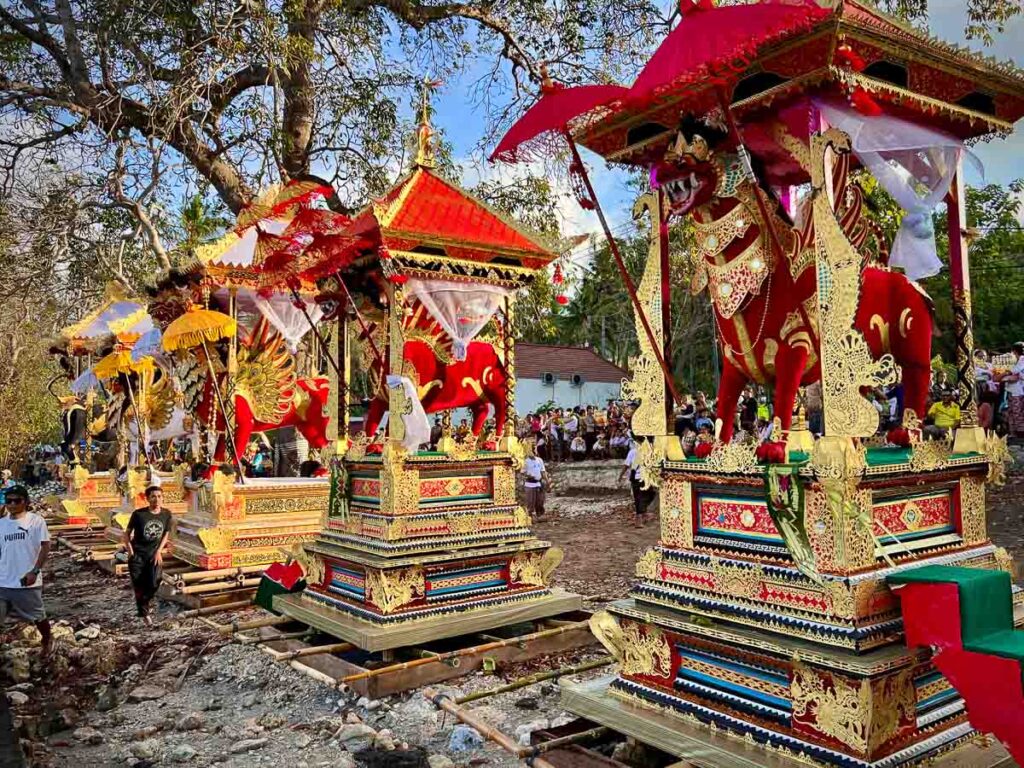
A long line of people dressed in traditional Balinese clothing marches by, holding photographs of their departed family and offerings. Baskets of food, flowers, and colorful bundles flash as they stoically amble toward the 5 animal Patulangans.
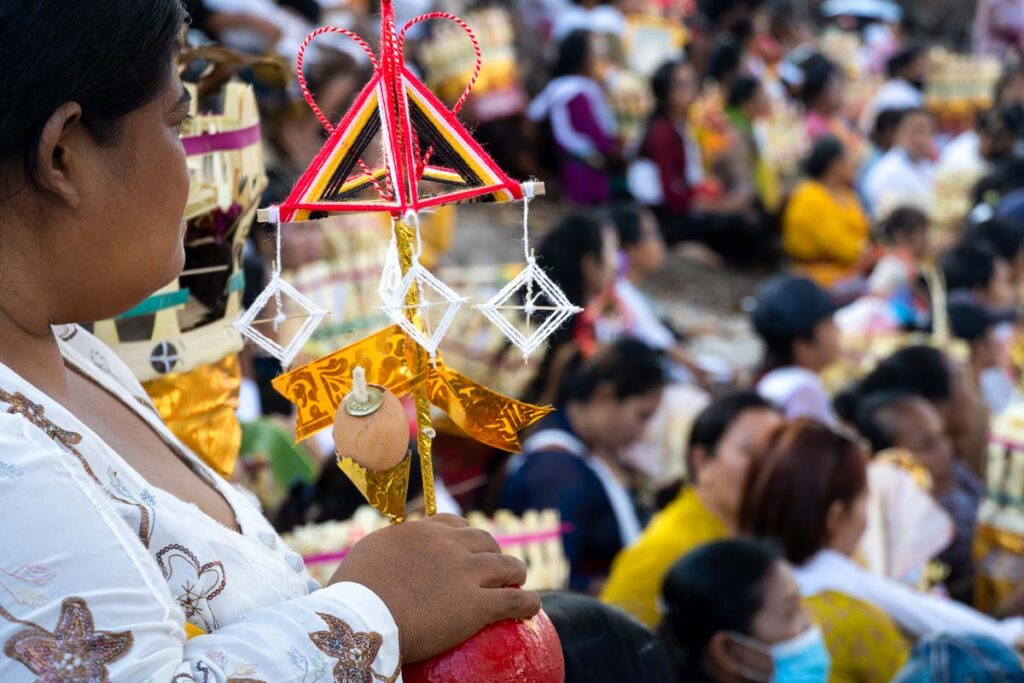
Pre-Cremation Ritual with the Wadah Temple Structure
A short while later, the men lift the grand Wadah to move it towards the right, opposite its former animal companions. The bull follows as the xylophone rings, and the resounding gongs cut through the air in a light, airy chaos.
The crowd hoots and cheers as the 1000 kg bobbing Wadah makes its way to the sea, carried by 120 people on a bamboo frame. The Wadah bearers set the structure down in its rightful spot, followed by a pair of bamboo stairs.
The bereaved families return to the shoreline, this time carrying white bundles, parasails, and photographs of their deceased loved ones. They walk the length of the beach, saying their final goodbyes and prayers before each bundle is placed inside the Wadah—a total of 36 overall. The contents: the cleaned skeletal remains of the deceased, exhumed from their temporary graves, washed, and dressed for the cremation.
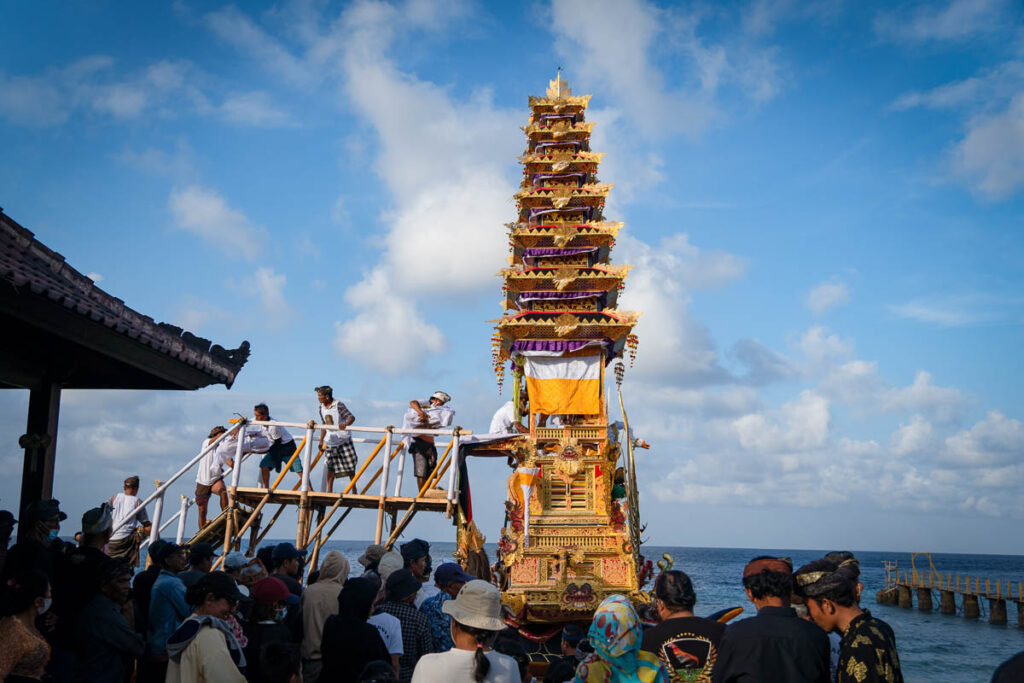
Procession of the Wadah
The men secure the bones as two boys, no older than 8 or 10, dressed in gold garments and heavy make-up, trod up the stairs next to the skeletal bundles. One boy on each side waves a decorated stick with feathers with their free hand.
Cheers explode from the crowd. With the stairs removed, the musical clinks again as the statue rotates around. Forward, backward and around, forward, backward and around.
Pop explodes some confetti. The action continues incredibly, with all 120 feet running in-sync ever closer to the cremation grounds until it joins the other animal Patulangans.
Men and women wave their hands back as the Wadah pass and the mourners sit in front of the animal Patulangan, holding baskets, offerings, eggs in tinfoil cones, and money.
As the Wadah settles in its final resting place, the cage door opens to release a bird, whom flies into a nearby twig. Birds are common in Indonesian homes, where they’re seen chittering around doorway entrances. Birds represent good fortune, and various birds stand for different types of energy protection.
Blessing the Animal Patulangans
An elder guides the two boys to the animal Patulangan. A dagger reveals itself from behind their backs, pointed towards the first Patulangan, a mythical dragon, at it, pointed it up, then blessed with holy water.
Guided to the second statue, the elder performing the blessing shuts his eyes and points the dagger at the dragon, up, and a squirt of holy water is thrown at it.
The same happens to the others, a dragon, a dragon, a dragon with wings, and finally, the bull.
Afterward, men with saws start cutting into the bamboo bodies of the animal Patulangans.

The Cremation Pyre
In this intricate ritual, the bodies are carried out of the Wadah and placed into one of the animal Patulangan, six skeletons in each. Each statue represents their family, selectively picked into which one they will get cremated in.
At 6:30pm, the pyre starts modest but quickly increases in size and intensity as petrol lights it aflame, burning bright and fast. Soon, the highly flammable material burns away, leaving the frame foundation against the shape of a dancing fire.
One by one, the frame pop and crack, before hitting the ground and breaking into ashes. The crowd gathers closer as the heat softens. Much of the skeletons have been effectively cremated.
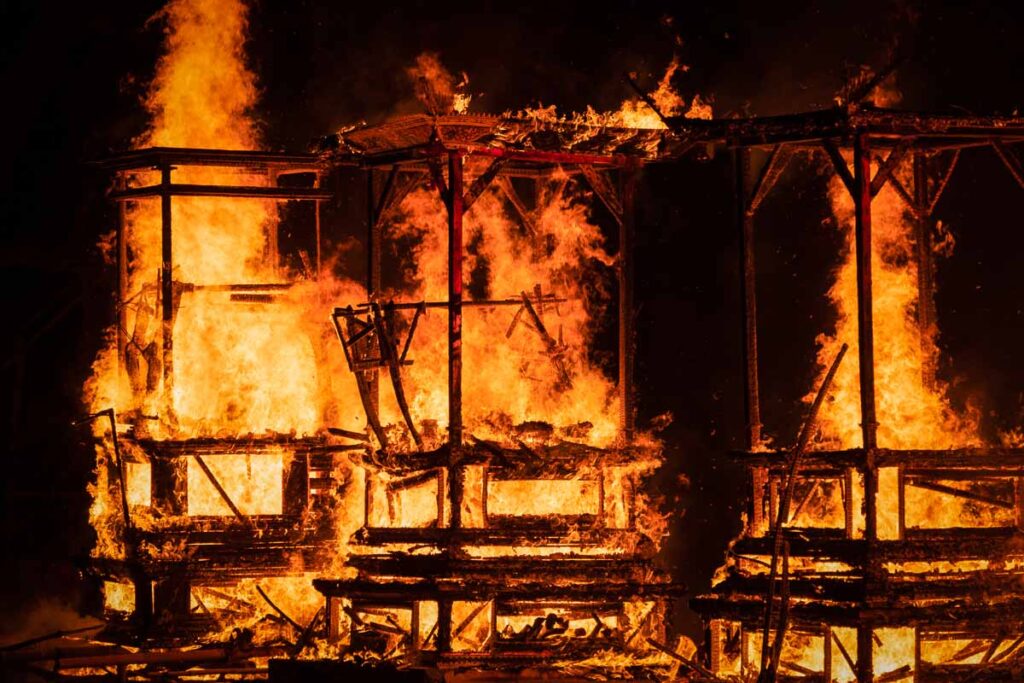
A Clamor to Collect the Remaining Ashes and Bones
Water sprays the last of the surviving embers, extinguishing what remains of the outlines of the former Patulangans. The spectators gather close, all in step with the subsequent events, while we were anything but.
People scurry over one another with tongs, picking through the charcoal, looking for the last remnants of white bones of their loved ones to add to one fire pit. A man with two coconuts and two women carrying offerings circle around the fire, seemingly in prayer.
Onlookers and family watch the fire die and once again scramble in with their tongs for bone fragments to put in their cloth-lined silver bowls.
As I watch this final scene unfold before me, I feel an emotion that cannot be explained. Like I’m watching the middle of a live documentary, but without the correct language subtitles. Invisible amid true Bali culture.
Scramble to Collect the Ashes/Bones Bones in a Silver Bowl
The Final Goodbye: Closing the Mass Cremation Ceremony Pitra Yadnya
A prayer stage still remains to be seen, but as it was nearly 9pm, our group start to head back to our hostel, leaving the last remaining part of the program a mystery.
The final stage described by a local: The pieces of bone are to be prayed on and kept in the family’s home for 12 days before being put out to sea to return to the elements. The last ceremonial act includes burning the Wadah, along with the gifts that the relatives carried with them in hopes that it will reach their ancestors in the afterlife.
Catherine Xu is the founder and author of Nomadicated, an adventure travel blog that helps travelers cross off their bucket list. Since discovering traveling in 2015, she has lived and journeyed to 65 countries across 5 continents and vanlifed the west coast USA for 2+ years. These days, she splits her time in Southeast Asia and California while sharing her travel stories and resources based on first-hand experiences. Catherine's other works has been referenced in major publications like MSN, Self, and TripSavvy.

